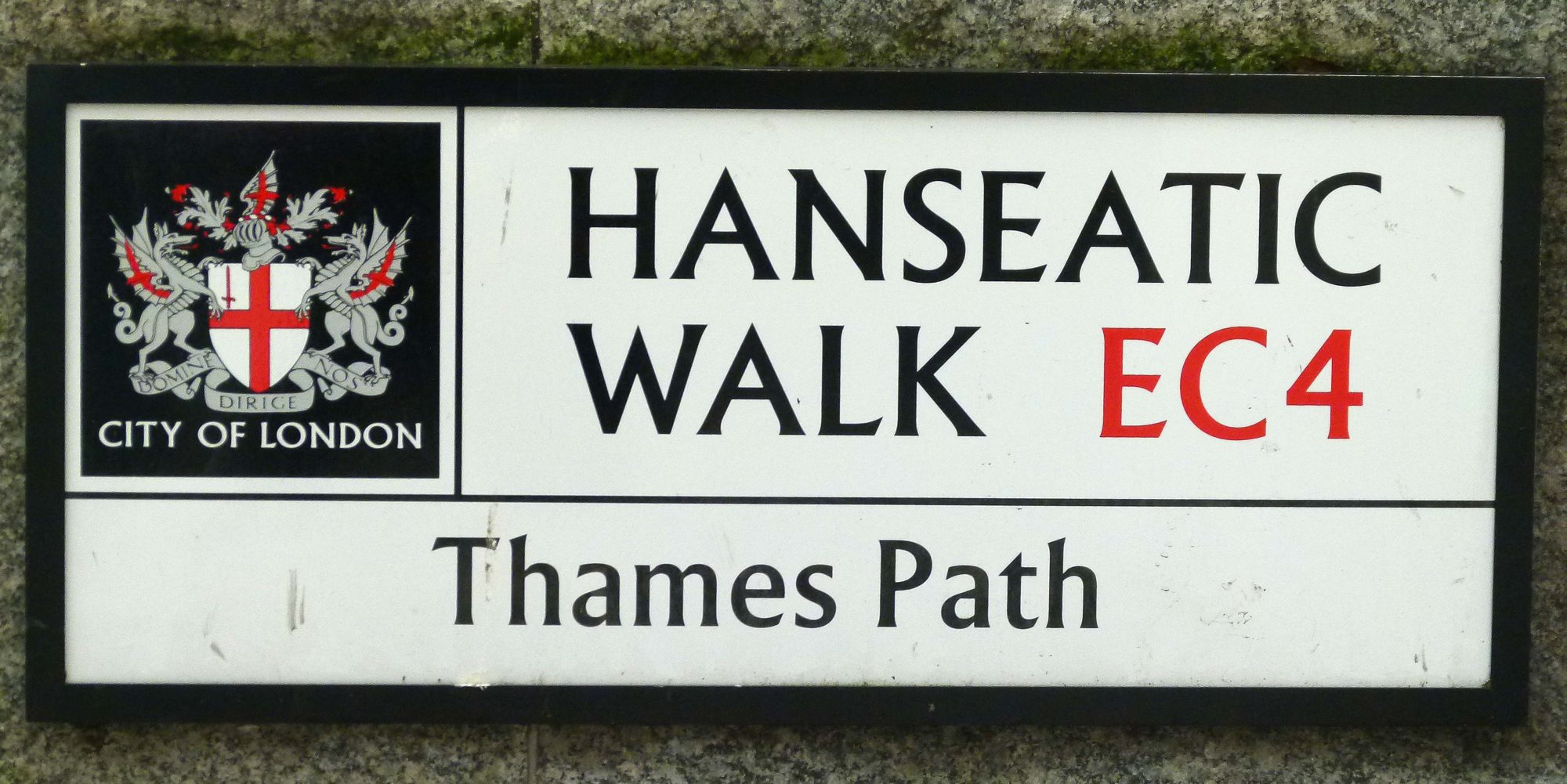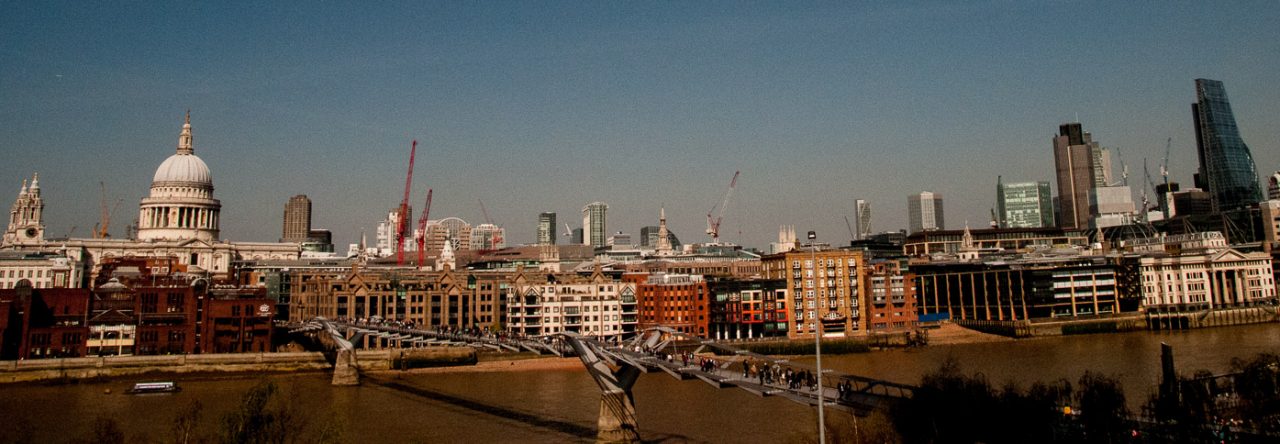In medieval times you could buy wood in Wood Street, bread in Bread Street and you knew what you were after if you headed for Ropemaker Street. You couldn’t get hold of a cannon in Cannon Street, however, because then it was known as Candlewick Street and Cannon Street is a later derivation.
Nonetheless, I applaud the Nuffield Health club for brightening up the area with two terrific cannons, the metalwork of which looks very authentic …
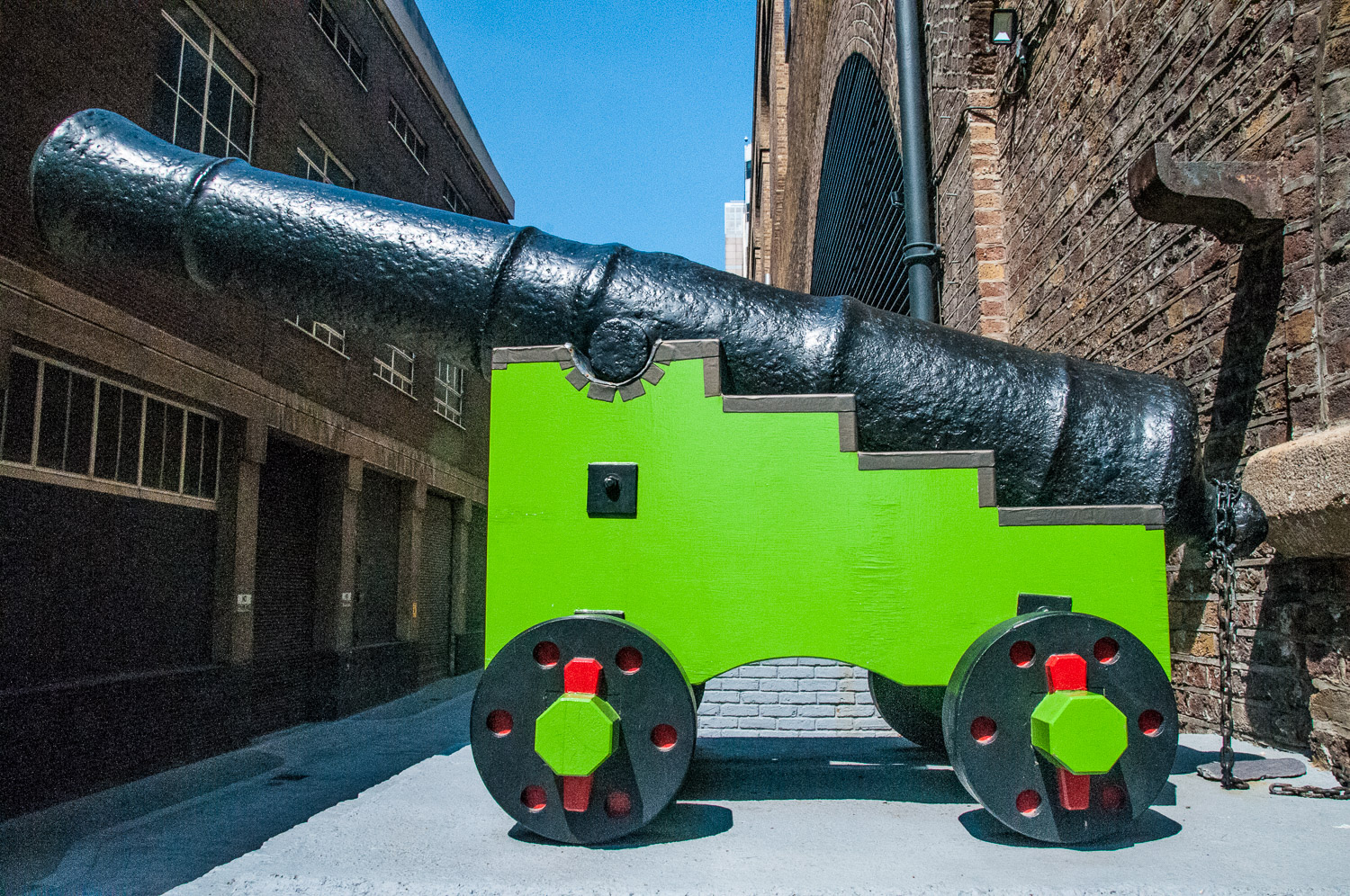
4 Cousin Lane EC4R 3XJ on the south side of Cannon Street. More impressive than a candlestick.
Cannon Street Station opened on 1st September 1866 and inside a year was fronted by the Cannon Street Hotel which housed much of the station’s facilities…
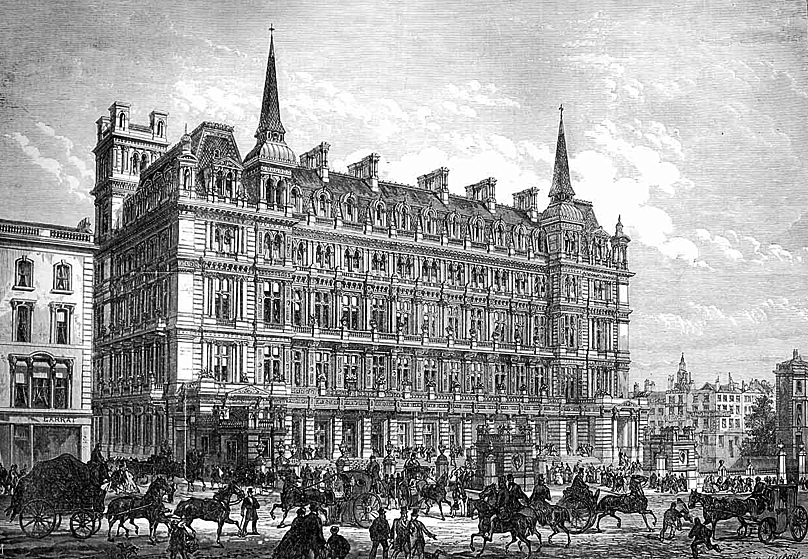
The Cannon Street Hotel in 1867 – Picture: Illustrated London News.
If you think it looks like the hotel at today’s Charing Cross Station it is no coincidence. They were both designed by Edward Middleton Barry, the son of Charles Barry of Houses of Parliament fame.
Barry’s Italianate style masterpiece was demolished in 1960 and the station, having been redeveloped several times, now looks like this …
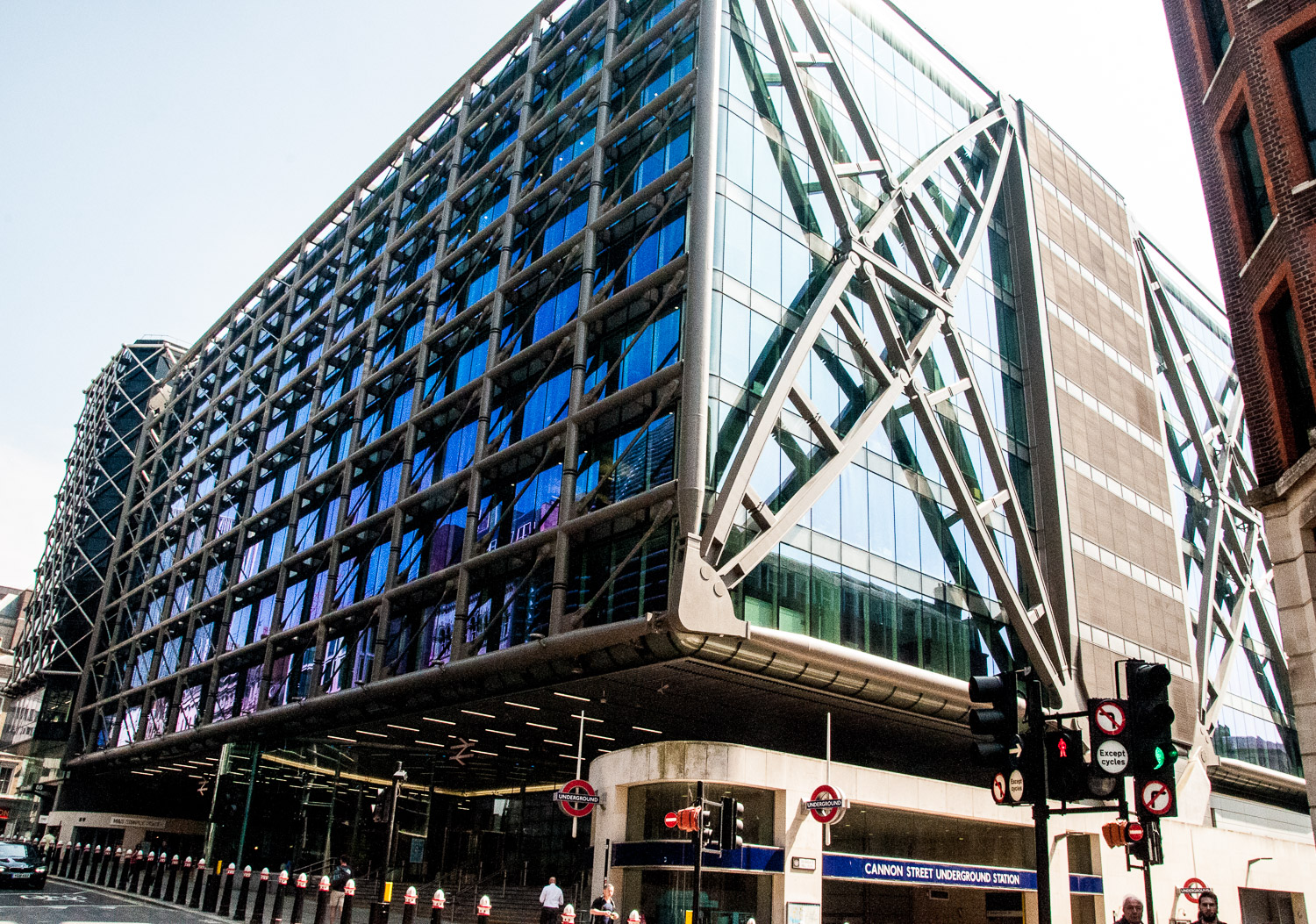
Some of you may remember when it looked like this …
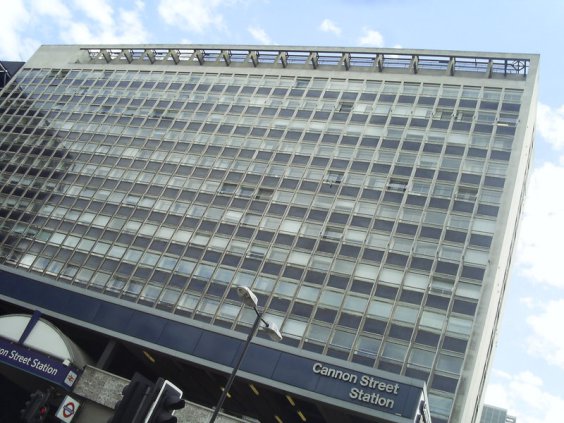
The Station in 1965 just after the office block was completed.
Researching this blog reminded me of a scandal. This hit the newspapers when it was revealed that the office designer, John Poulson, had a dodgy friendship with a British Rail surveyor to whom he was ‘bunging’ £25 a week in return for contracts. The Cannon Street job was apparently worth a £200 bonus plus a new £80 suit. Both were found guilty of corruption (Poulson got seven years). His extensive corrupt activities were revealed to have stretched so far that the Home Secretary at the time, Reginald Maudling, felt obliged to resign at the height of the scandal in 1972.
The original station was characterised by its two Wren-style towers, 23 ft square and 135 ft high, which faced on to the River Thames and are still there …
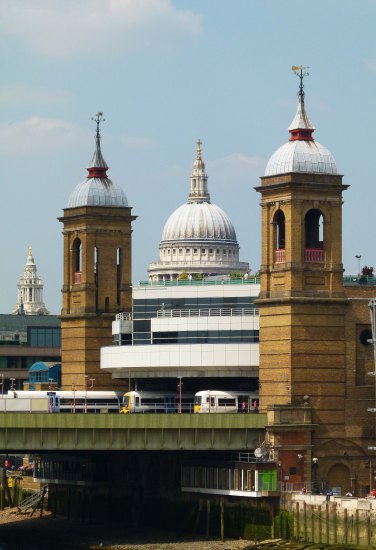
Picture from ‘A Cabbie’s London’.
The towers supported a 700 ft long iron train shed crowned by a high single arch, almost semicircular, of glass and iron.
This postcard from around 1910 is a great image looking north …
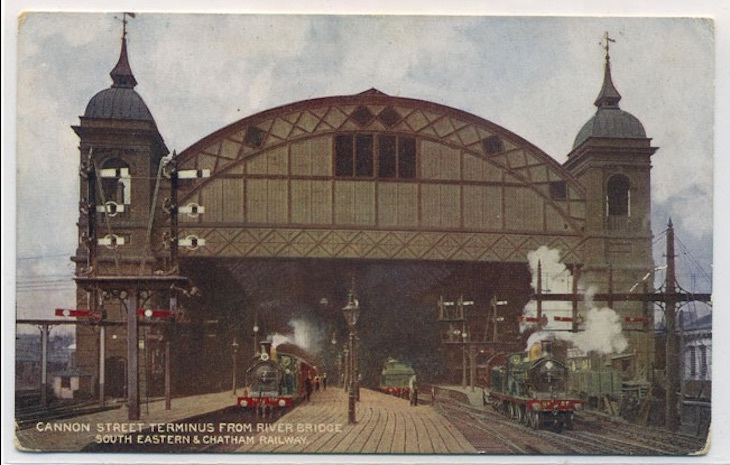
The glass roof was removed during the war to protect it but, in a terrible irony, the factory it was moved to was itself bombed and the station roof destroyed.
A walk down Cousin Lane will give a good idea of the scale of the station and a glimpse of the western tower …
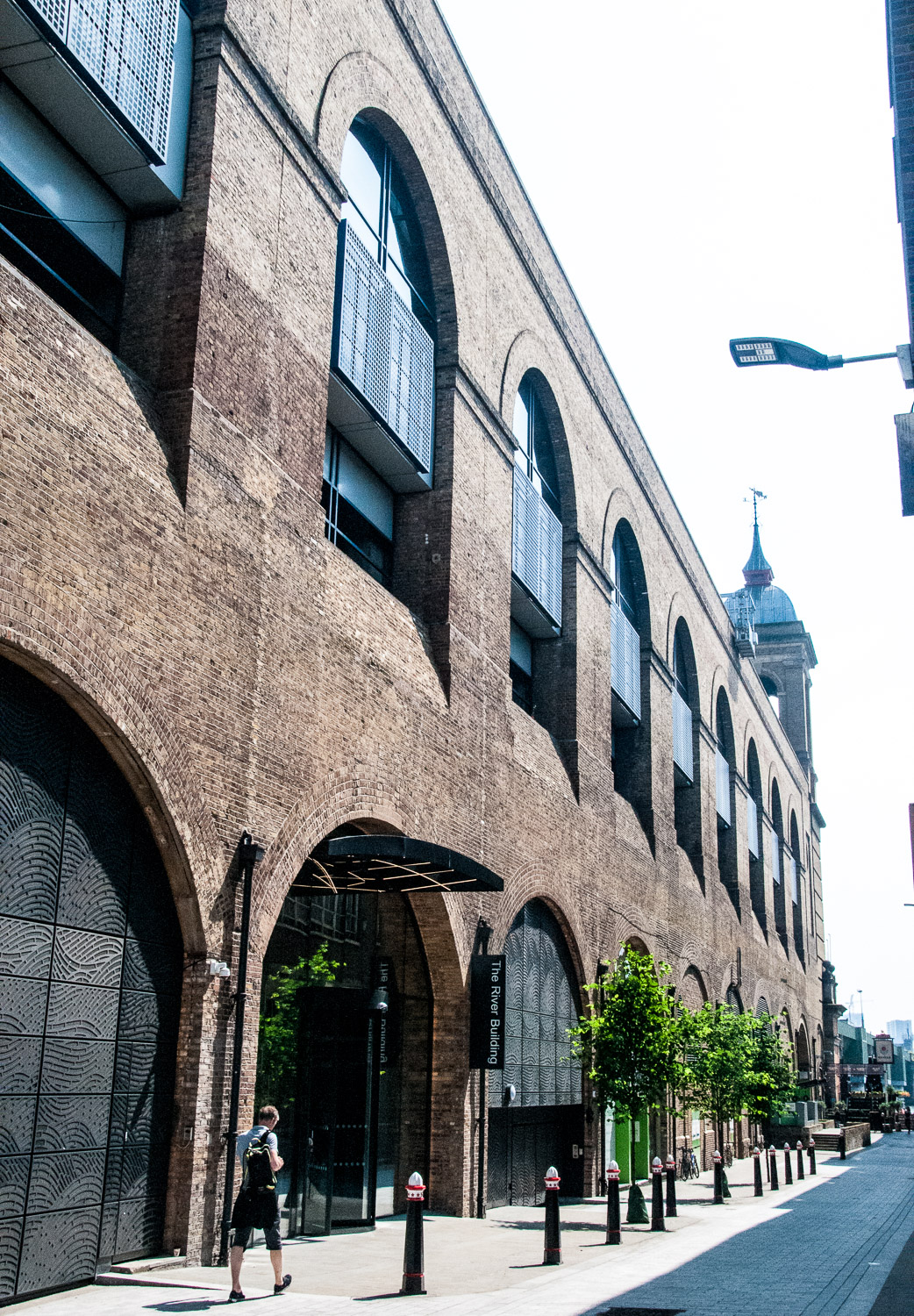
Just past the Nuffield cannons you will see the entrance to Steelyard Passage which runs underneath the station …
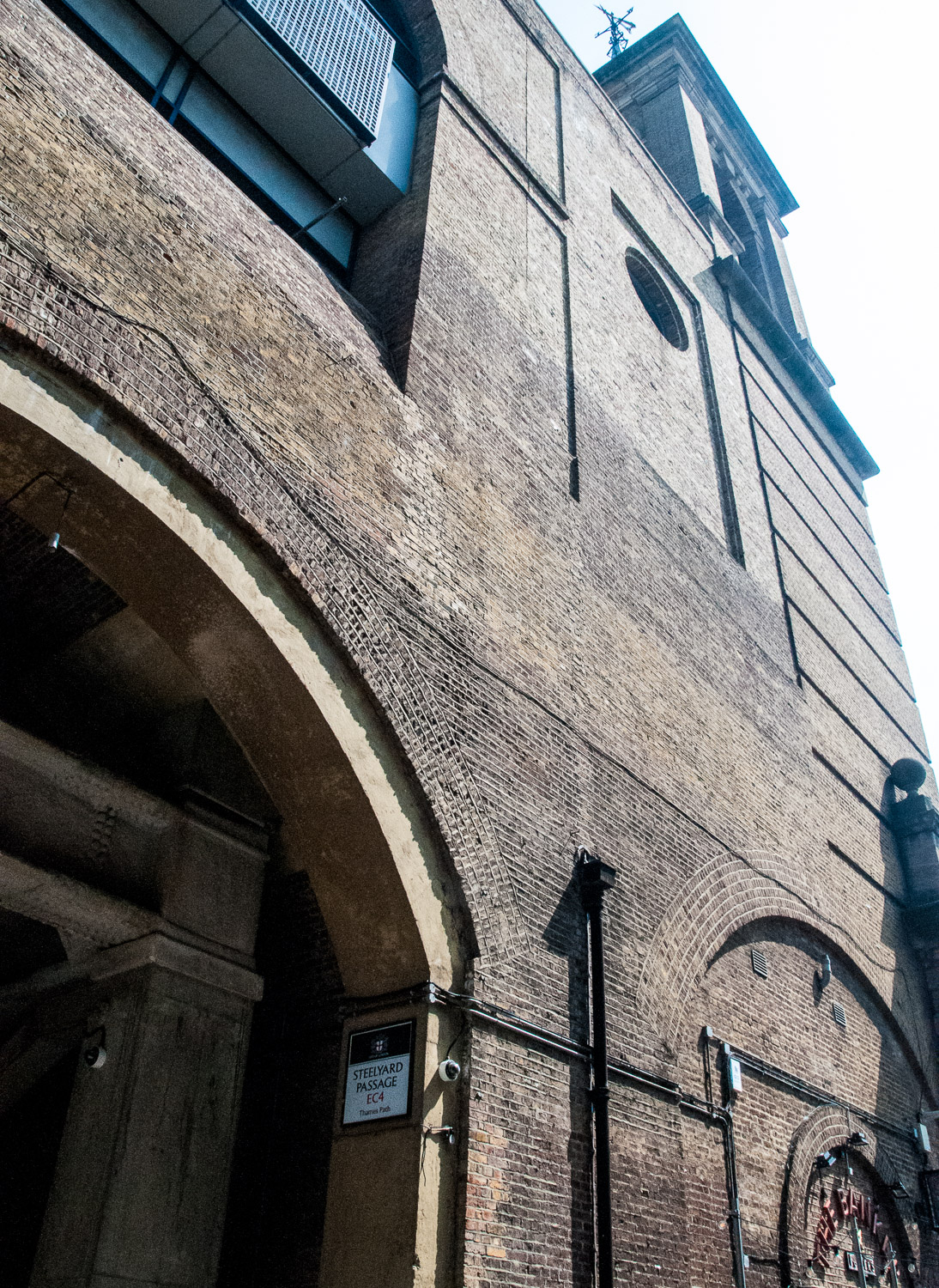
The very atmospheric Steelyard Passage …
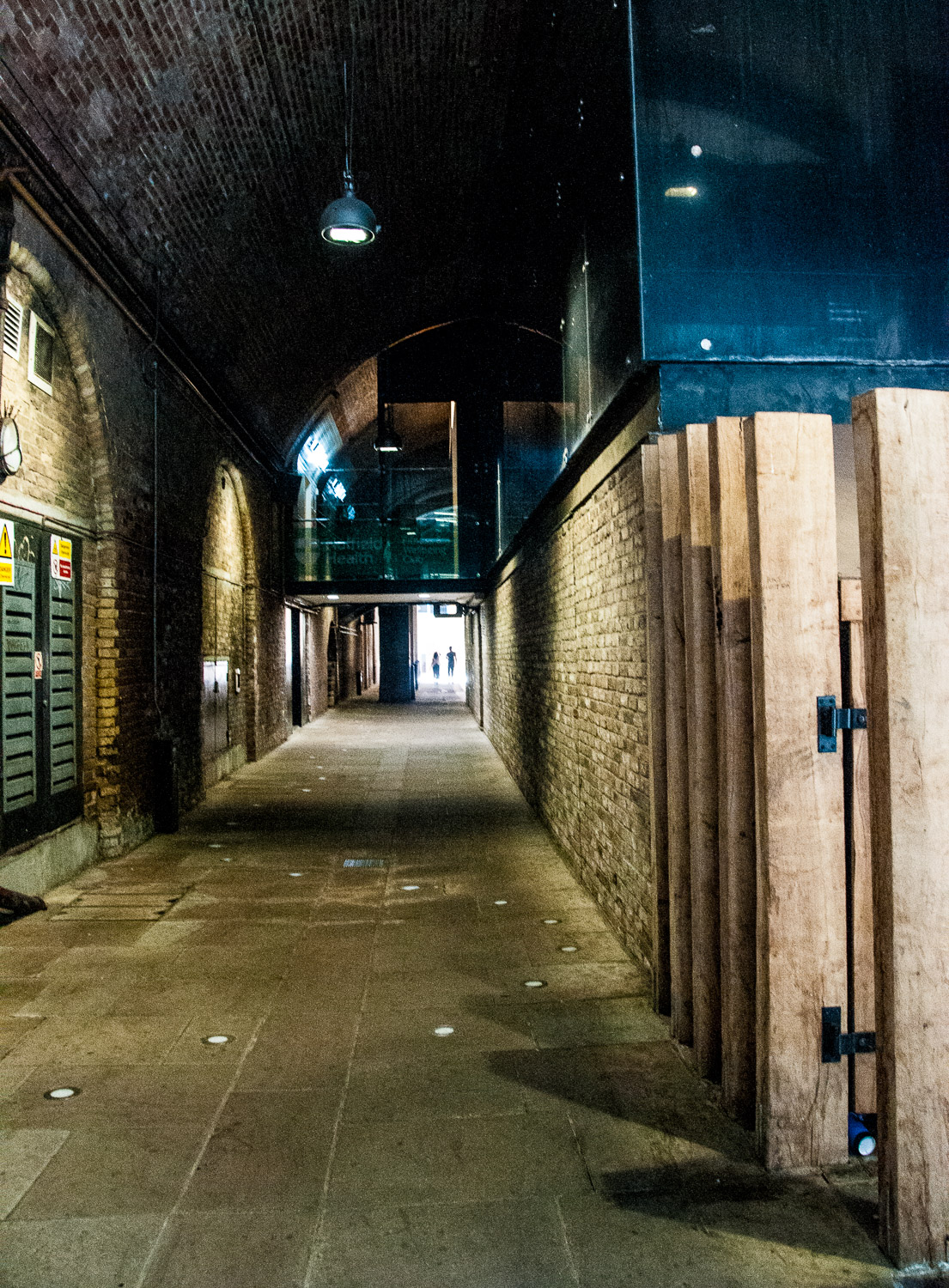
Rather spookily there is a sound installation of the noise made in a steelworking environment.
This steelyard was the London headquarters the Hanseatic League, or Hansa. This was a northern European trading confederation, founded in the middle of the 13th century, which continued for some 600 years. Its network of alliances grew to 170 cities and it protected its interests from interfering rulers and rival traders using a powerful fleet financed by its members. Amazingly, this part of the City was a self-governing enclave of Germany and still owned by the cities of Lübeck, Bremen and Hamburg in 1852 when they sold their interest to the South Eastern Railway for the construction of the station.
There is a commemorative plaque nearby …
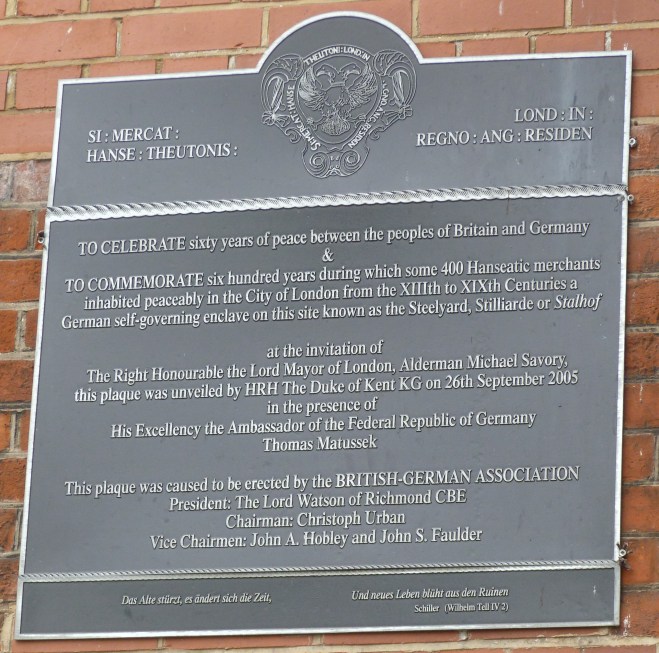
The inscription in German at the end translates as ‘The old falls, the times are changing and new life blooms from the ruins.’ A quote from William Tell – a drama written by Friedrich Schiller in 1804.
The original 1670 Hanseatic League plaque from their headquarters showing the League’s Arms (a double-headed eagle) can now be found in the Museum of London …

And the connection is also commemorated in the naming of part of the Thames River Walk …
